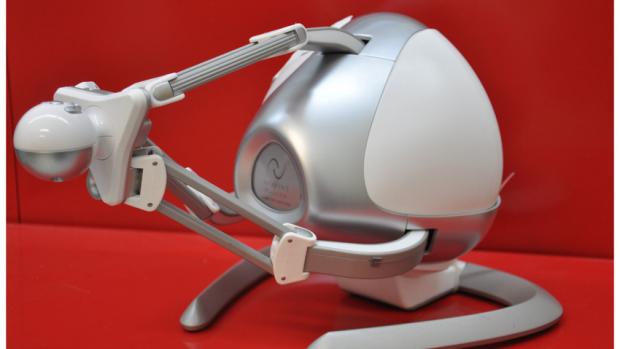Video Game Feedback May Help the Injured Heal
Researchers Demonstrate Therapeutic Applications for Off-the-Shelf Joysticks

Brooklyn, N.Y.—Video gamers have long been familiar with the thrill of force feedback—the technology that allows players to feel the rumble of a racecar hitting a virtual road or sense the weight of wielding an on-screen sword. A team of researchers from the Polytechnic Institute of New York University (NYU-Poly) and Sapienza University of Rome have now published findings showing that force feedback is much more than fun. Combined with science learning in a therapeutic setting, it may even be healing.
A paper in the journal PLOS ONE details the experiments devised and performed by NYU-Poly’s Maurizio Porfiri, associate professor of mechanical and aerospace engineering, and Oded Nov, associate professor of technology management and innovation, along with Professor Paolo Cappa, an NYU-Poly affiliated faculty member, and visiting master student Andrea Clerico of Sapienza University of Rome.
The use of robotic machines in physical therapy and rehabilitation has been evolving for more than two decades. So-called robot-mediated therapy (RMT) is viewed as too costly or complicated to implement in many care settings. However, haptic devices—those that provide tactile or force feedback—have become less expensive and are now integrated into gaming joysticks, personal computers, mobile devices, and other everyday technologies. The researchers wanted to test the utility of these haptic devices in physical rehabilitation. In a novel twist, they also incorporated science education elements into the experimental tasks to gauge if such content increased participants’ engagement with the exercises.
The team devised a series of experiments on 48 healthy test subjects to determine if force feedback delivered through a readily available, low-cost haptic gaming joystick would positively impact participants’ ability to complete on-screen tasks.
They created a 2D virtual map of a popular local attraction, New York City’s Bronx Zoo, and asked participants to use the joystick to move a cursor along a set path through the zoo. Short paragraphs of science trivia and information about the zoo popped up along the course, and subjects were asked to read this content when presented.
Participants were subjected to several types of force feedback and a variety of assessments of their performance were calculated. The joystick delivered converging and diverging forces, pushing the cursor either toward or away from the proscribed path.
“These conditions meant that subjects had to make continual adjustments to counter the force feedback and keep the cursor on track, which affected speed, smoothness, accuracy, and hand position,” said Porfiri. “The actions and movements we elicited are similar to the motor exercises used to rehabilitate upper-limb paralysis.”
Perhaps one of the most significant findings was the impact of the learning modules. A post-task survey showed that the learning aspect increased participants’ interest and engagement in the activity. “This has a particularly strong implication for rehabilitative therapies, as patients quickly grow bored of repetitive tasks,” said Nov. “If we can maintain engagement by incorporating some form of learning, there may be greater motivation to perform the tasks and reap the therapeutic benefits.”
The research team believes that further studies are warranted, both to test the haptic device in patients with partially paralyzed upper limbs, and to test different types of learning content. The use of specially tuned affordable haptic devices may make it possible for patients to complete sophisticated rehabilitative tasks at home—and flex their mental muscles, too.
This research was supported by grants from the National Science Foundation, the Italian Ministry of Health Department of Medical Devices and Drugs, and the Honours Center of Italian Universities.
The paper, “Can Force Feedback and Science Learning Enhance the Effectiveness of Neuro-Rehabilitation? An Experimental Study on Using a Low-Cost 3D Joystick and a Virtual Visit to a Zoo,” is at http://www.plosone.org/article/info%3Adoi%2F10.1371%2Fjournal.pone.0083945#B1.





